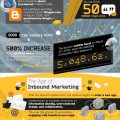How Marketing Affects Our Brains
Today’s life is full of advertisements. You can see them almost anywhere – at the gym, on the TV, on the Internet… How do you think, do these ads influence your brain? Most people think that ads don’t affect them, but actually, they kind of do. And this happens pretty much unconsciously, this is why you don’t recognize it as affection. Like it or not, people are just animals, we are just a little more evolutionary advanced that the ‘real’ animals. Our brain has been evolving for millions of years and we still have some ‘animal’ mechanisms hardcoded in it. We used these mechanisms to survive thousands of years ago, and even though we don’t use them that much again, they are still there, in our brains… And they work… We still have primitive responses to many things in our lives (maybe this is why my wife often says that to me 🙂 ). Usually, the first reaction to an irritant is primitive, and just after that, we turn on our cognitive abilities. And this is what marketing experts take advantage of when making ads.
In the following infographic, you can see some nice examples of how people react to different colors, forms, visualizations, and sounds. These tricks are used in advertisements for achieving a greater impact.
How Marketing Affects Us
Marketing has become an integral part of our lives in the past few decades. It is used to inform and persuade consumers about products and services, as well as to shape our perceptions and values. This, in turn, affects how we think, feel, and act when it comes to certain topics, products, or services.
On a daily basis, we can see marketing everywhere; from television commercials to online banners and social media posts. This constant exposure has helped shape our preferences, expectations, and values on numerous topics related to consumption. For instance, we’ve learned that certain foods are healthier than others due to marketing efforts by food companies; consumers learn what technologies they should purchase due to the advertisements they see, and even our political beliefs are sometimes swayed by marketing materials.
The impact of marketing on our lives also extends beyond what we consume and how we think about certain topics. For example, a growing body of research has shown that specific types of marketing can influence our purchasing behaviors in other areas of life. For instance, a study published in the journal Social Science & Medicine found that certain types of marketing campaigns can significantly increase the likelihood of young adults engaging in risky behaviors such as smoking or drinking alcohol.
Additionally, there is significant evidence that suggests that marketing can have a profound impact on mental health as well. Studies have shown that certain kinds of advertising messages or representations can lead people to feel less satisfied with their bodies or even cause mental distress for those who feel unrealistic expectations are being placed upon them by society. The long-term effects of this type of marketing are yet unknown.
The different Ways Marketing Affects Us
Marketing profoundly impacts our brains by influencing our thoughts, emotions, and behaviors. Through various techniques, marketers can shape our preferences, persuade us to buy products, and even affect our perceptions of value and quality. Here’s a detailed look at how marketing affects our brains:
1. Emotional Engagement
Marketing often appeals to emotions to create a connection with consumers. Emotional engagement can make advertisements memorable and persuasive. For example, using humor, nostalgia, or empathy can trigger emotional responses that enhance brand recall and loyalty.
- Neuromarketing Studies: Studies using fMRI and EEG have shown that emotionally charged advertisements activate brain regions associated with memory and emotion, such as the amygdala and hippocampus .
- Example: Coca-Cola’s “Share a Coke” campaign, which replaced its logo with common names, created a personal and emotional connection with consumers, significantly boosting sales.
2. The Power of Visuals
Visual elements in marketing, such as colors, images, and videos, play a crucial role in capturing attention and conveying messages quickly.
- Color Psychology: Different colors can evoke different emotions. For instance, red can create a sense of urgency, while blue is associated with trust and security .
- Visual Impact: High-quality visuals can stimulate the visual cortex and improve engagement and retention of information .
3. Social Proof and Authority
Marketing strategies often leverage social proof and authority to influence consumer behavior. Testimonials, reviews, and endorsements from credible sources can enhance trust and persuade people to make purchasing decisions.
- Brain Response: Seeing others approve of a product activates brain regions associated with social behavior and decision-making, such as the prefrontal cortex.
- Example: Celebrity endorsements can significantly impact brand perception and sales, as seen with brands like Nike using athletes like Michael Jordan and LeBron James.
4. Scarcity and Urgency
Creating a sense of scarcity or urgency can drive immediate action. Limited-time offers or limited stock availability can make products seem more desirable.
- Psychological Effect: Scarcity can trigger the fear of missing out (FOMO), which is a powerful motivator. This engages the brain’s reward system and can lead to impulsive decisions.
The cool infographic from above, created by myemma.com, is really worth sharing. Please, consider doing so and helping us create more cool posts like this one.






